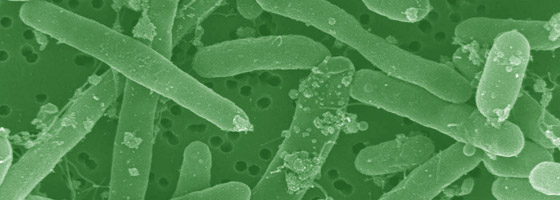Monitoring Total Coliform, Fecal Coliform Bacteria

Coliform bacteria in water have long been used as indicators of possible water pollution by intestinal parasites and pathogens. While most coliforms are not pathogenic, they serve as valuable indicators because they are more common than pathogenic bacteria, have longer viability in freshwater, and are relatively easy to identify. Since it’s infeasible to test for every type of pathogen when assessing water quality, researchers test for these easily detectable indicator organisms with the assumption that killing the indicator organisms will also eliminate the pathogens during the disinfection process.
Coliforms include a wide range of bacteria whose primary source may not be the digestive tract. Fecal coliform are a subset specific to the intestinal tract of warm-blooded animals and can be separated from other coliform bacteria because they grow at the more restrictive temperature of 44.5° C.
E. coli is a specific type of fecal coliform bacteria and is among the most commonly used indicators for human and animal fecal wastes. Numerous strains of E. coli exist; while most are harmless, certain strains, such as E. coli O157:H7 may cause serious illness and possibly death.
Total Coliform Test
A variety of tests exist for coliform detection in water. The most basic of these is the presence-absence (P/A) test, which evaluates the presence or absence of total coliform and/or E. coli. If total coliform is detected in 100 mL of water, it is not considered potable. However, a qualitative test such as the P/A test for total coliform or E.coli in the water does not indicate its suitability for other purposes, such as swimming or bathing.
Quantitative tests can evaluate the suitability of the water for swimming and bathing. These include the Membrane-Filtration (MF) technique and the Most Probable Number (MPN) technique. Coliform density is reported as the number of colony forming units (CFU) per 100 mL of water.
The MF Method is a fast, simple way of estimating bacterial populations in water. The water sample is passed through a 0.45 micron filter. The filter and its trapped bacteria are transferred to the surface of a medium that will support the growth of the bacteria, which can then be identified based on the morphological characteristics of their colonies. Because this method accommodates testing a large number of samples at once, it is especially useful for drinking water. The MF method, however, is limited to samples that do not contain a high level of background organisms, suspended solids, sediments, or metals.
The MPN method involves incubating samples of various dilutions on a coliform-specific media in order to determine the number of bacteria in the sample statistically. It is ideal for wastewater and sludge applications because analysts can use highly turbid samples by diluting the sample prior to analysis.
Image Credit: Berkeley Lab




0 comments